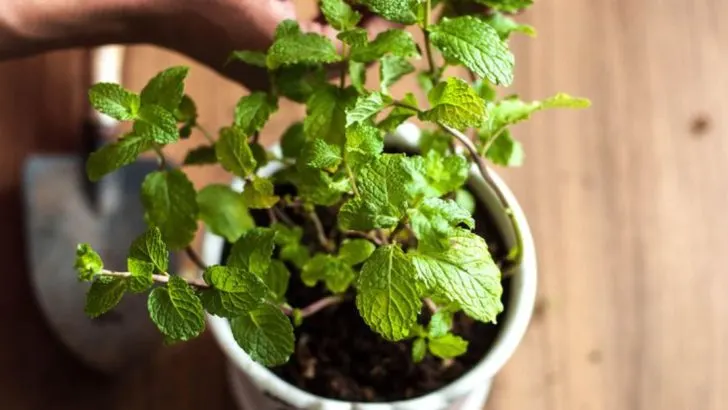Houseplants aren’t just for decoration – some are also surprisingly edible! Whether you want to add fresh flavors to your meals or enjoy a snack straight from your indoor garden, these 20 gorgeous houseplants offer both beauty and utility.
Aloe Vera
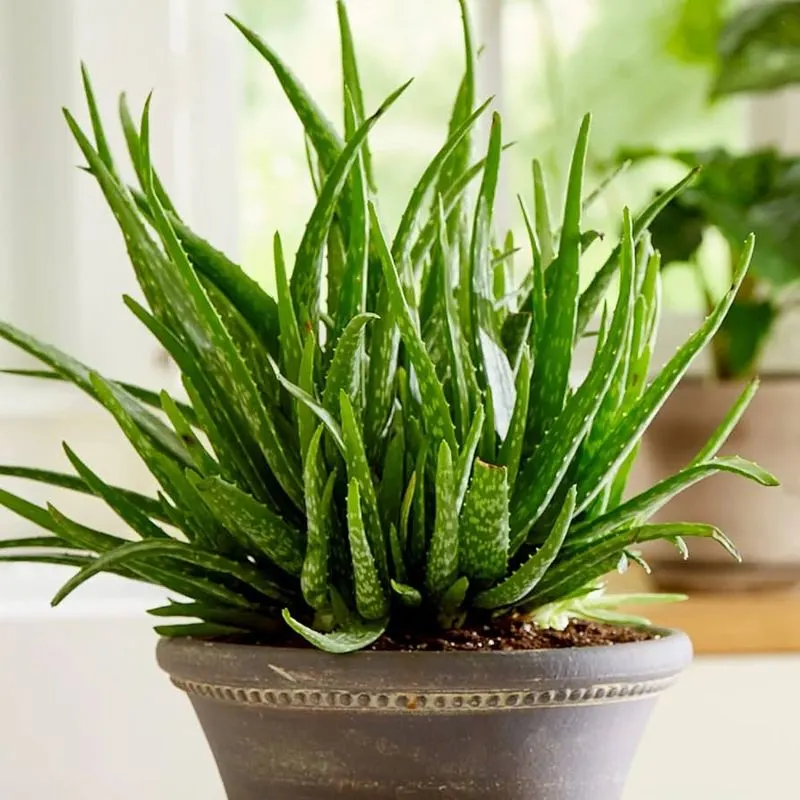
The fleshy leaves of Aloe Vera are not just a soothing remedy for sunburns; they’re edible too. You can scoop out the gel and add it to smoothies or juices for a health boost. The slightly bitter taste is overshadowed by its nutritional benefits. With vitamins, minerals, and antioxidants, it’s a powerhouse in a pot. Aloe Vera needs bright light and occasional watering, making it a low-maintenance addition to your home. Just ensure you scoop the clear gel, avoiding the outer leaf layer, which can be a laxative.
Mint
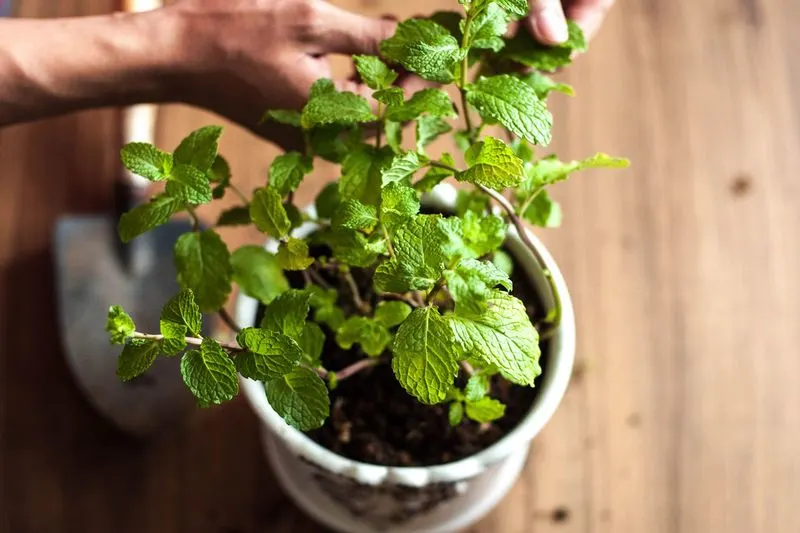
Mint leaves are a favorite for everything from teas to desserts, adding a refreshing touch. Growing mint indoors is quite simple; it thrives in a pot with good drainage and indirect sunlight. The aroma itself can be a delightful addition to your kitchen. Regular pruning encourages bushy growth, ensuring a continuous supply of fresh leaves. Use them fresh or dried, and watch them enhance your culinary creations with ease. Remember to keep the soil moist but not too wet for optimal growth.
Rosemary
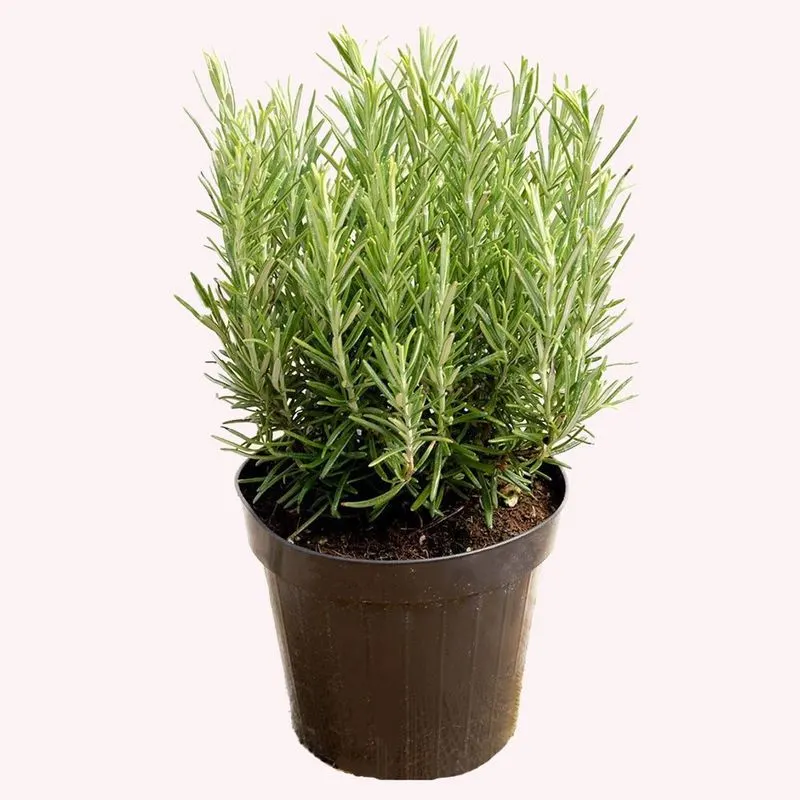
This aromatic herb is a staple in Mediterranean cuisine, offering a pungent flavor to dishes. Rosemary’s needle-like leaves are perfect for seasoning meats and soups. Indoors, it prefers a sunny spot and well-drained soil. Its woody stems and robust nature make it a hardy houseplant that also deters certain pests. With its captivating scent, rosemary doubles as an air freshener. Harvesting is easy—just snip what you need, and it will keep growing back, providing endless culinary inspiration.
Lemon Balm
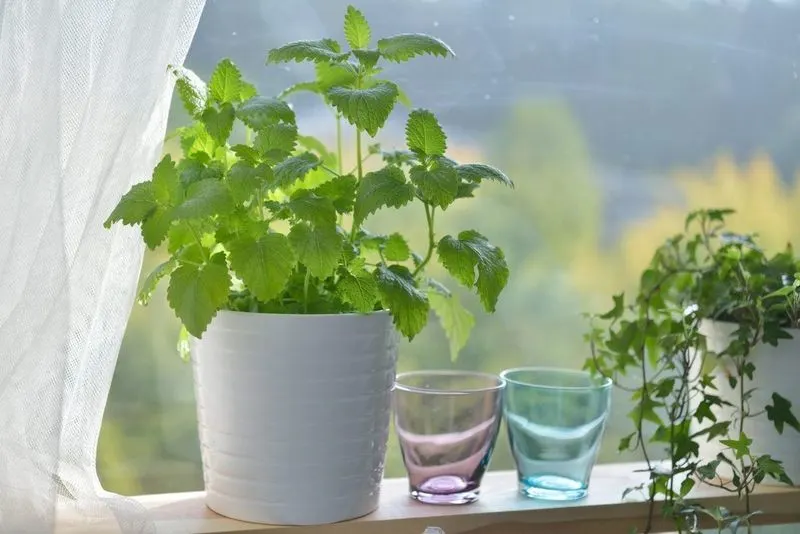
Lemon Balm offers a gentle citrus flavor, perfect for teas and salads. Its calming properties make it a popular choice for herbal remedies as well. Growing it in a pot indoors requires minimal effort; just ensure it receives indirect sunlight and consistent moisture. The leaves can be used fresh or dried, retaining their aroma either way. Regular harvesting encourages new leaves to sprout, making it both a decorative and functional plant. Its pleasant scent can also uplift your living space.
Basil
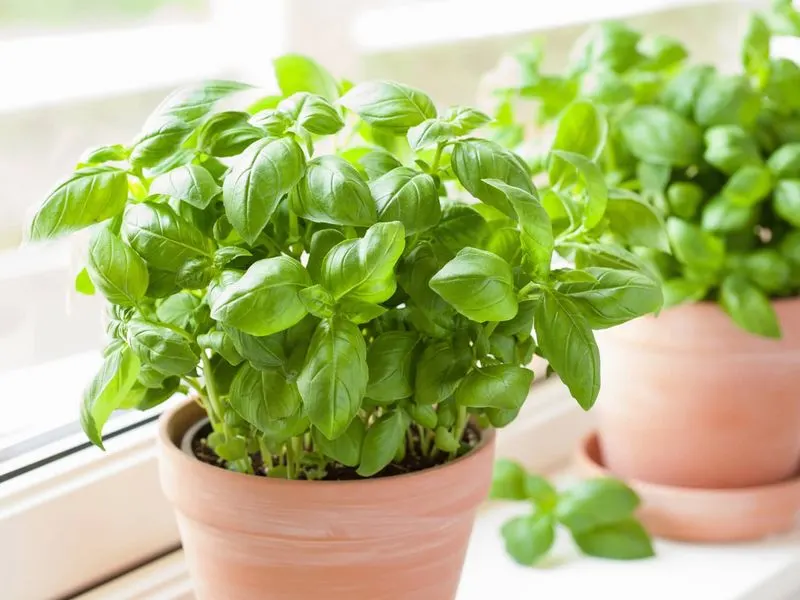
The fragrant leaves of basil are synonymous with Italian cooking, bringing a sweet, peppery flavor to dishes. As a houseplant, basil thrives in warm, sunny spots with well-drained soil. Frequent harvesting not only gives you fresh leaves for pesto and salads but also promotes bushier growth. Basil’s lush foliage adds a touch of greenery to your kitchen, and its aroma can invigorate your home. Water it regularly, but be cautious of overwatering, which can lead to root rot.
Chives
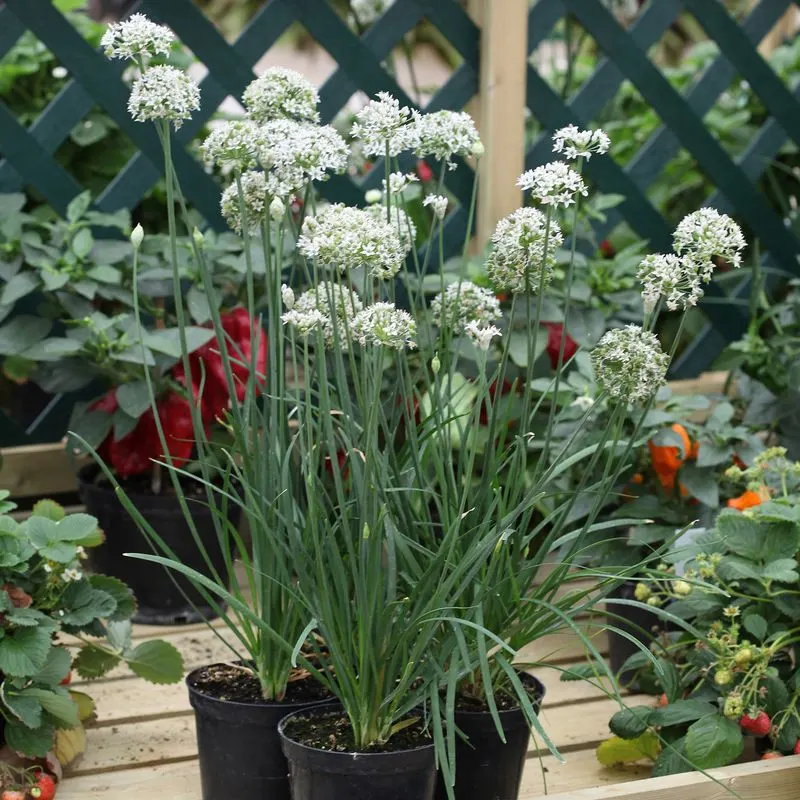
Chives add a mild onion flavor to an array of dishes, from omelets to baked potatoes. They’re easy to grow indoors, needing only a pot with good drainage and a sunny spot. Their slender green stalks not only provide fresh seasoning but also make an attractive addition to your windowsill garden. Regular trimming promotes new growth, ensuring a steady supply. Chives are a hardy plant and can be harvested as needed. They’re perfect for anyone looking to spice up their culinary efforts.
Parsley
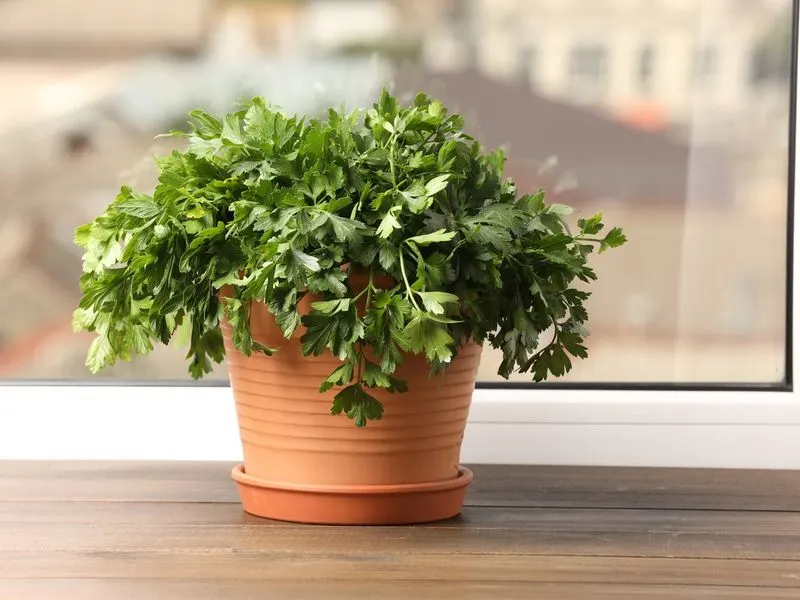
Parsley is more than a garnish; it’s a nutritional powerhouse rich in vitamin C and K. Growing parsley indoors is simple—place it in a pot with adequate drainage and provide indirect sunlight. Regular watering keeps it healthy and lush. Its crisp, fresh taste enhances everything from soups to salads. Frequent harvesting encourages new growth, ensuring a fresh supply of leaves. Parsley’s vibrant green color can brighten your kitchen space, making it both a useful and decorative plant.
Oregano
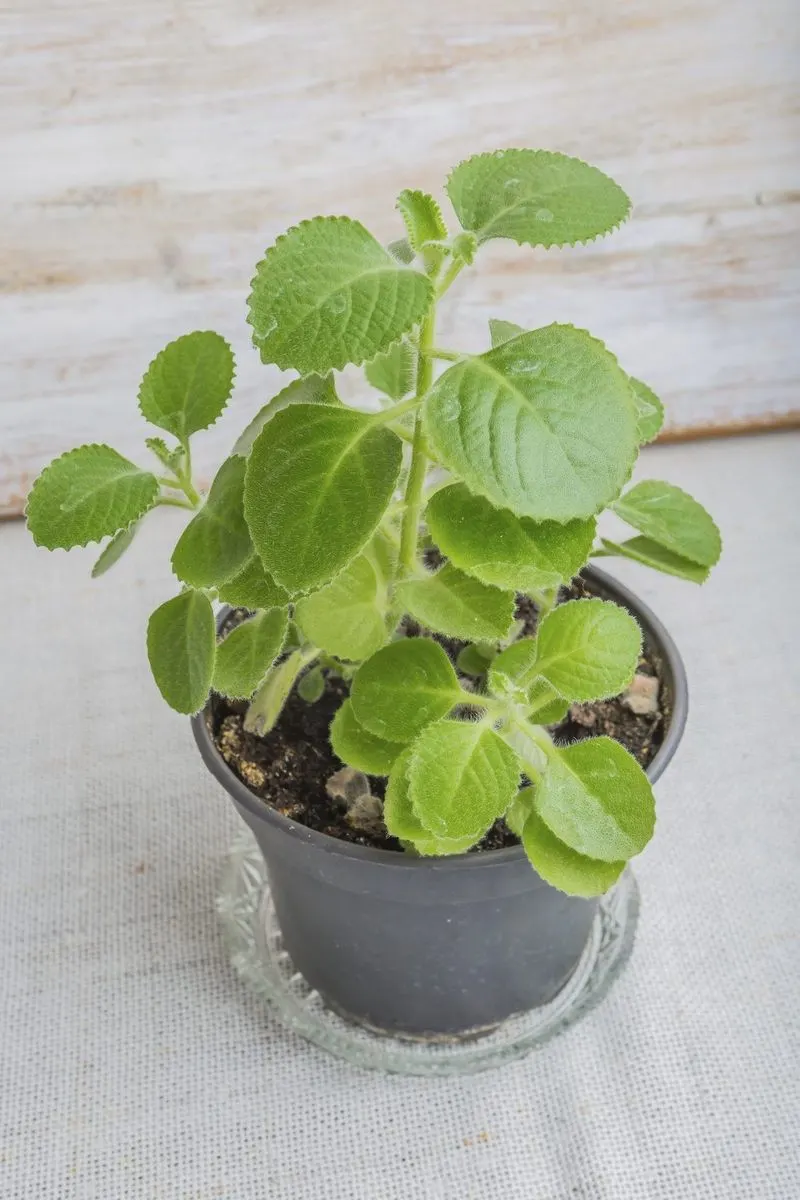
Known for its robust flavor, oregano is a staple in Italian and Greek cuisines. Indoors, it requires a sunny spot and well-draining soil to thrive. The small, aromatic leaves pack a punch in both fresh and dried forms, perfect for seasoning pizzas and pastas. Its hardy nature makes it a resilient houseplant, withstanding occasional neglect. Regular pruning promotes bushy growth and a continuous supply of leaves. Oregano’s presence in your kitchen can inspire culinary creativity and experimentation.
Thyme
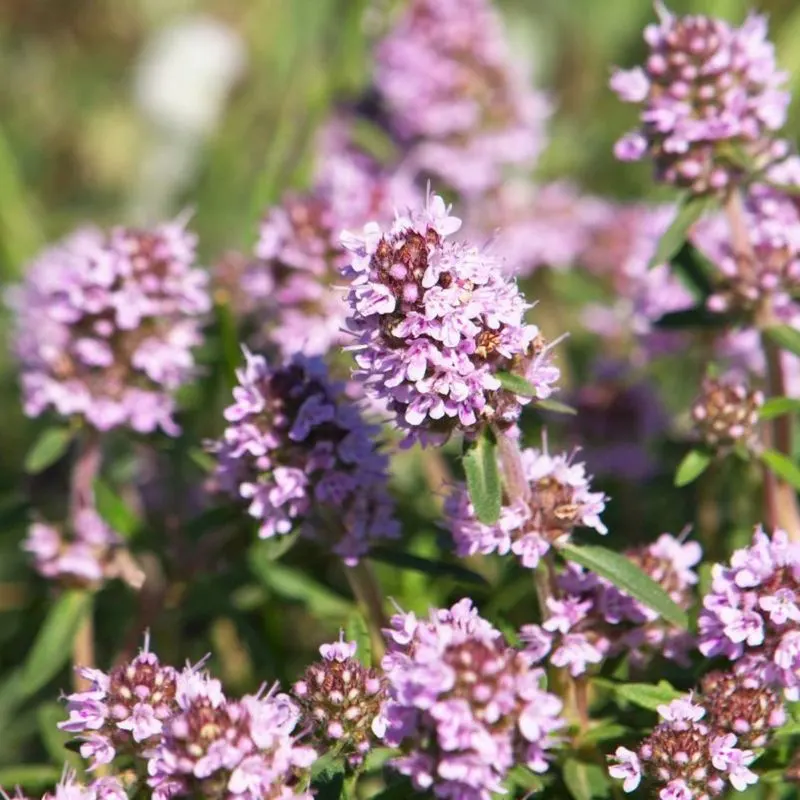
Thyme brings a subtle, earthy flavor to dishes and is a favorite for stews and roasts. This perennial herb thrives indoors with minimal care; it prefers a sunny location and well-drained soil. Its tiny leaves and woody stems create a charming, rustic look. Regular trimming not only keeps the plant healthy but also ensures a steady supply of thyme for your culinary needs. Its presence can add both fragrance and flavor to your home, making it a valuable addition to your indoor garden.
Sage
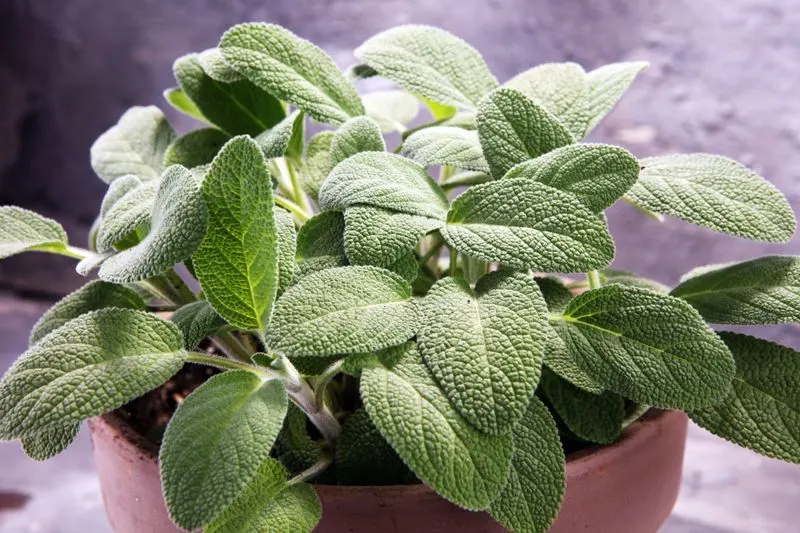
Sage offers a warm, slightly peppery taste, perfect for enhancing meats and vegetables. As a houseplant, it requires a sunny spot and well-drained soil to flourish. The broad, fuzzy leaves are not only flavorful but also attractive, adding texture to your plant collection. Regular harvesting encourages growth, ensuring a fresh supply of leaves. Sage’s distinctive aroma can complement your home’s ambiance, making it both a culinary and decorative asset. It’s a versatile herb with both culinary and ornamental appeal.
Lavender
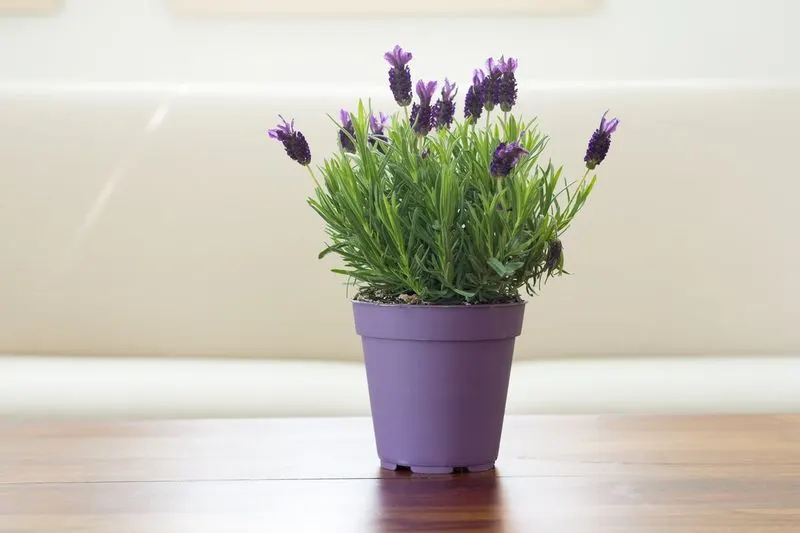
Lavender is cherished for its calming fragrance and delicate flavor. It’s used in everything from desserts to teas, offering a floral note. As a houseplant, lavender requires a bright spot and well-draining soil. The purple blooms are visually striking, and the plant’s scent can create a soothing atmosphere in your home. Regular pruning keeps it bushy and productive. Lavender’s multifaceted appeal makes it ideal for those who appreciate both aroma and aesthetics in their indoor spaces.
Bay Laurel
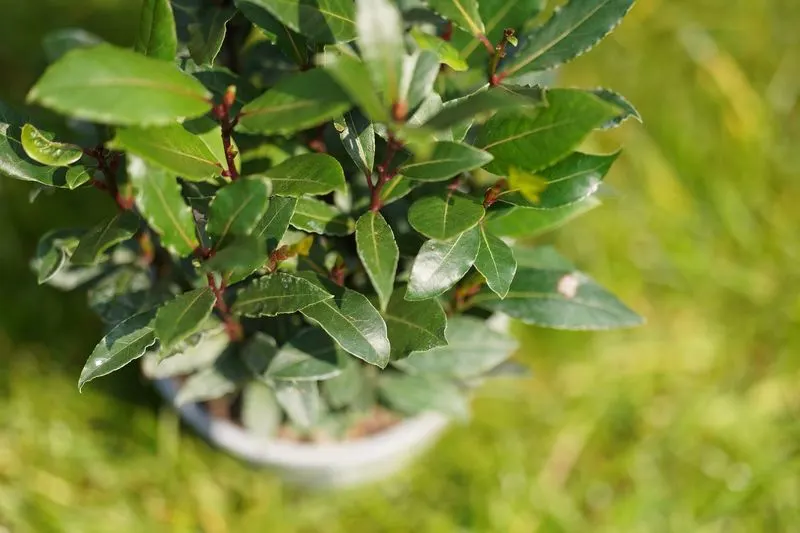
Bay leaves are integral to many cuisines, imparting a subtle depth to soups and stews. Growing bay laurel indoors is straightforward; it thrives in bright light and requires well-drained soil. The glossy leaves are not only useful in cooking but also add a touch of elegance to your home. Regular pruning maintains its shape and promotes new growth. Harvest leaves as needed, drying them for long-term use. Bay Laurel’s classic appeal and utility make it a must-have for indoor gardeners.
Nasturtium
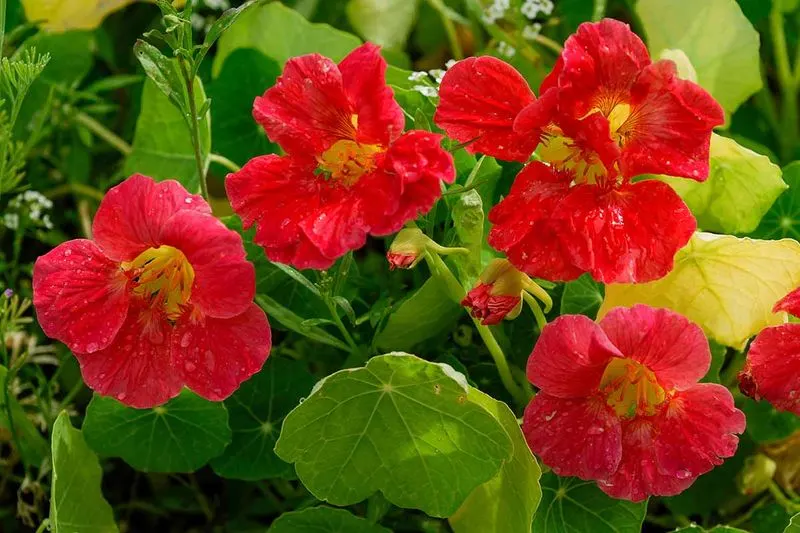
Nasturtiums are not just ornamental; their flowers and leaves offer a peppery flavor, reminiscent of watercress. This plant is perfect for salads and garnishes. Indoors, it needs a sunny spot and regular watering. The bright flowers add color to your home, creating a cheerful environment. Nasturtiums are easy to grow, with trailing habits that suit hanging baskets. Harvest flowers and leaves regularly for the best flavor. Their vibrant presence and culinary uses make them a delightful addition to any indoor space.
Dill
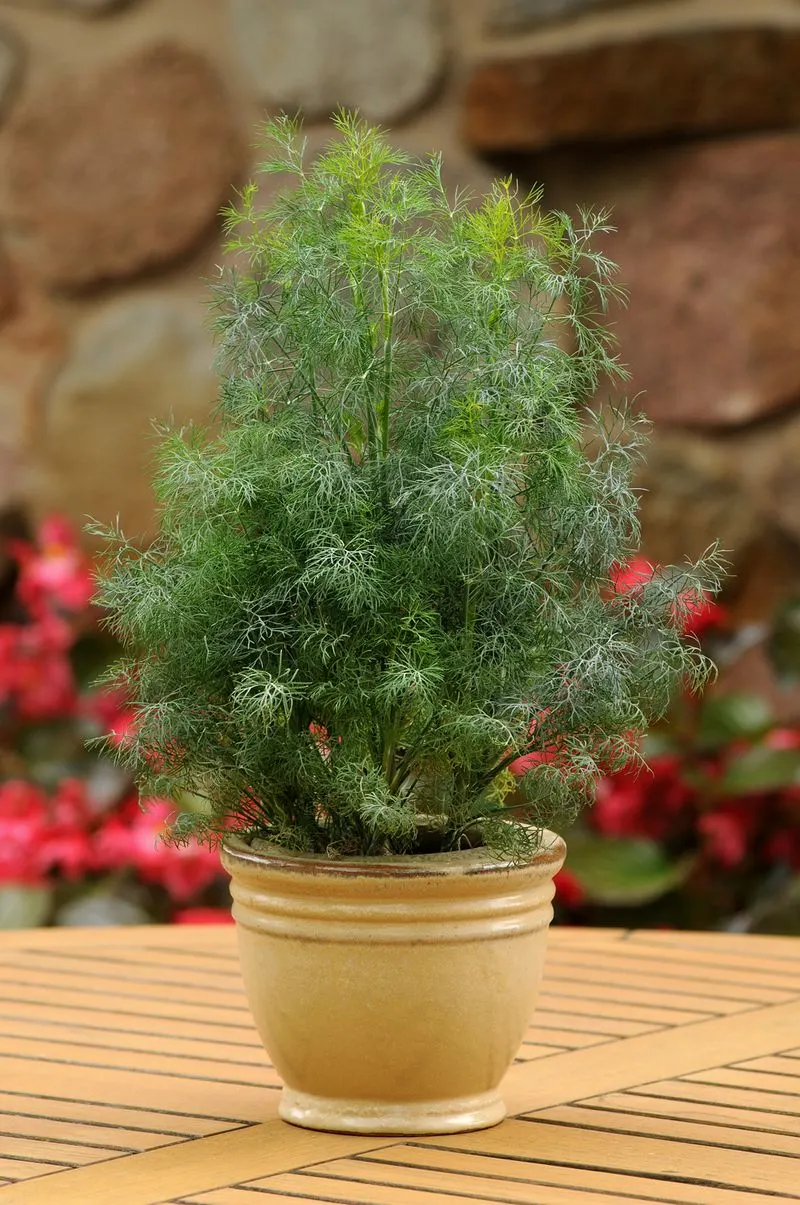
Dill offers a fresh, tangy flavor, often used in pickles and sauces. It’s an easy plant to grow indoors, needing a bright spot and well-drained soil. The feathery leaves are visually appealing, adding a touch of greenery to your home. Regular harvesting ensures a steady supply and encourages new growth. Dill’s unique flavor can enhance various dishes, making it a versatile addition to your indoor herb garden. Its presence can inspire culinary creativity and experimentation.
Sorrel
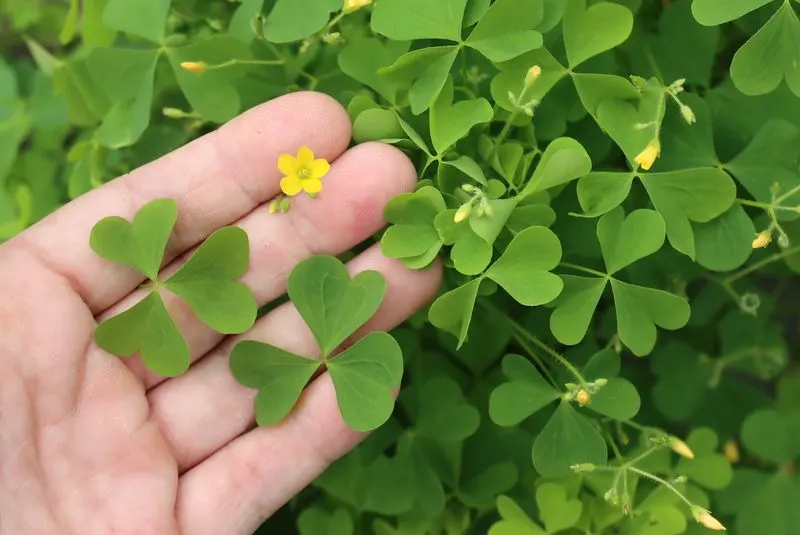
Sorrel offers a tart, lemony flavor perfect for soups and salads. It’s easy to grow indoors, thriving in a pot with well-drained soil and indirect sunlight. The broad green leaves not only taste great but also add a splash of color to your home. Regular harvesting promotes new growth, ensuring a fresh supply. Sorrel’s distinctive taste and vibrant appearance make it a unique addition to your indoor plant collection. It’s ideal for those who enjoy experimenting with flavors.
Stevia
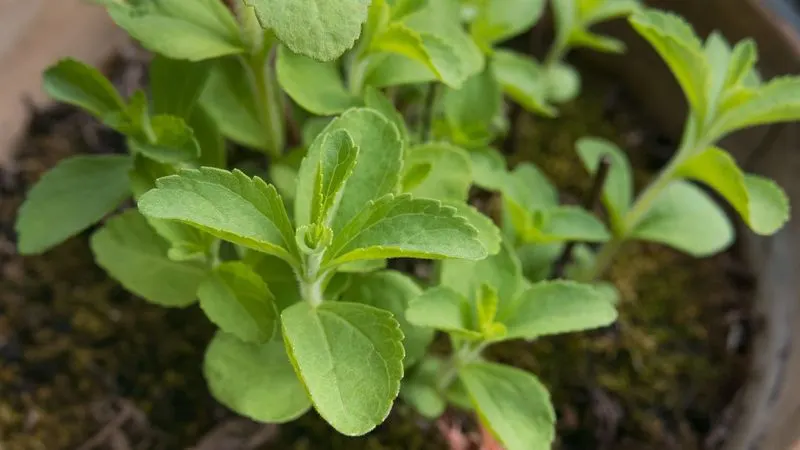
Stevia is a natural sweetener, offering a sugar-free option for drinks and desserts. Growing stevia indoors is simple; it requires bright light and well-drained soil. The small green leaves are where the sweetness lies, providing a healthy alternative to sugar. Regular pruning encourages bushy growth and a continuous supply of leaves. Stevia’s sweet nature and minimal care requirements make it an excellent choice for health-conscious indoor gardeners. Its presence can transform your culinary creations.
Fennel
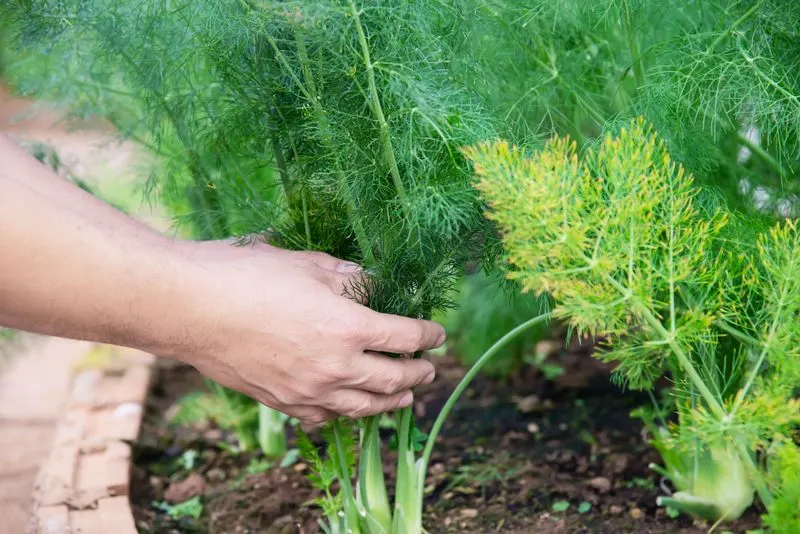
Fennel offers a mild, anise-like flavor, perfect for soups and salads. It’s an easy plant to grow indoors, needing a bright spot and well-drained soil. The feathery leaves are visually appealing, adding a touch of greenery to your home. Regular harvesting ensures a steady supply and encourages new growth. Fennel’s unique flavor can enhance various dishes, making it a versatile addition to your indoor herb garden. Its presence inspires culinary creativity and experimentation.
Cilantro
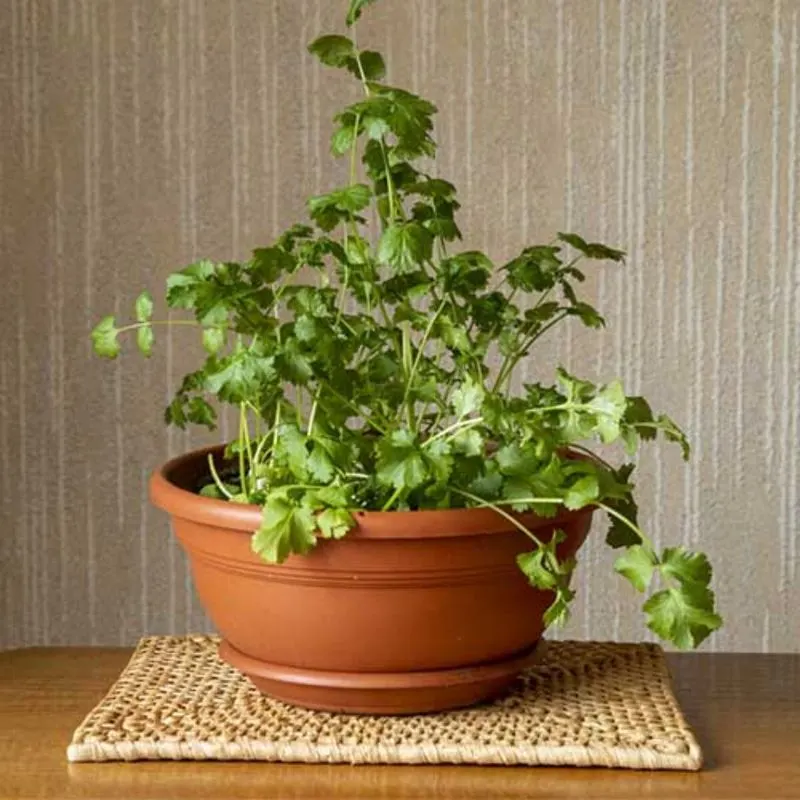
Cilantro is known for its bold, citrusy flavor, essential in many global cuisines. Indoors, it thrives with good drainage and a sunny spot. The delicate green leaves are best used fresh, adding vibrancy to salsas and salads. Regular trimming promotes new growth, ensuring a steady supply. Cilantro’s distinct taste can elevate your culinary adventures. Its presence in your kitchen not only provides fresh flavors but also adds a natural touch to your decor. Keep the soil moderately moist for optimal growth.
Tarragon
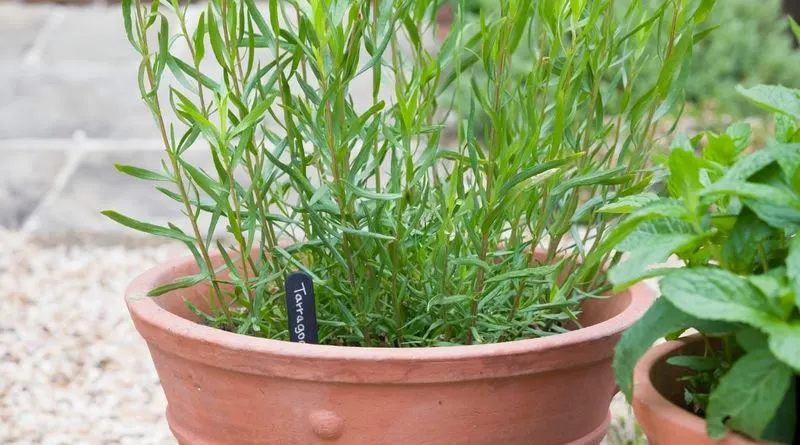
Tarragon offers a unique, slightly licorice-like flavor, perfect for seasoning chicken and fish. This perennial herb thrives indoors with minimal care, needing a sunny spot and well-drained soil. The slender green leaves are aromatic and can elevate various dishes. Regular pruning encourages growth and a continuous supply of leaves. Tarragon’s sophisticated flavor and elegant appearance make it a valuable addition to any indoor herb garden. Its presence can inspire culinary creativity and experimentation.
Bay Leaves
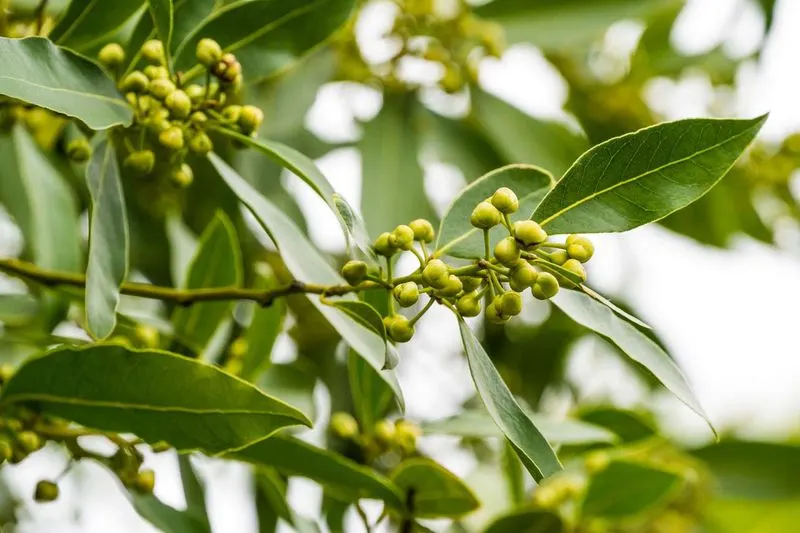
Bay leaves are integral to many cuisines, offering a subtle depth to soups and stews. Growing bay laurel indoors is straightforward; it thrives in bright light and requires well-drained soil. The glossy leaves are not only useful in cooking but also add a touch of elegance to your home. Regular pruning maintains its shape and promotes new growth. Harvest leaves as needed, drying them for long-term use. Bay Laurel’s classic appeal and utility make it a must-have for indoor gardeners.

